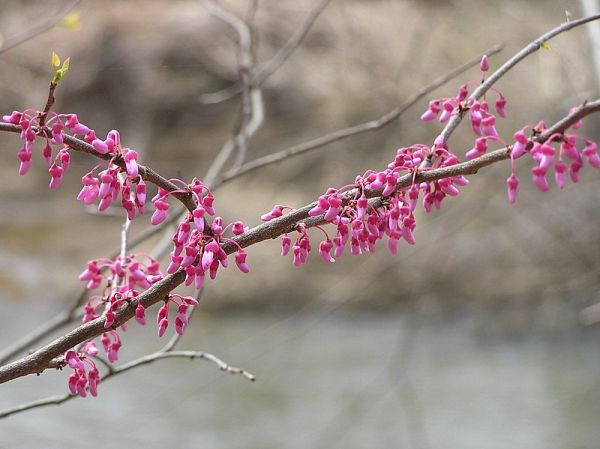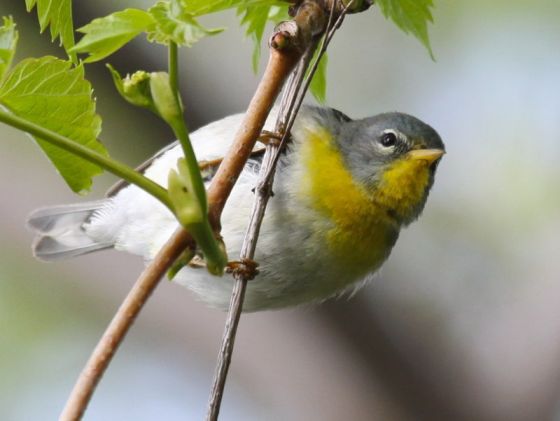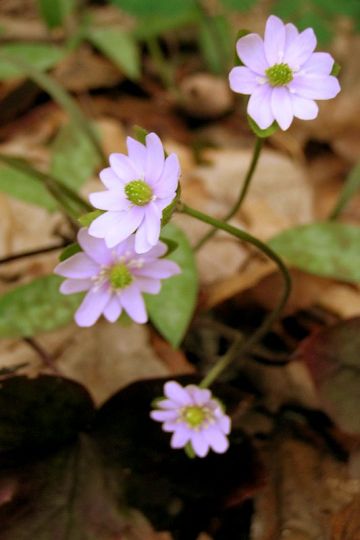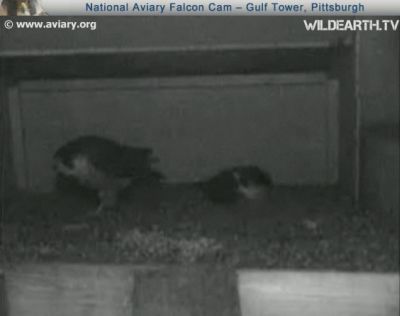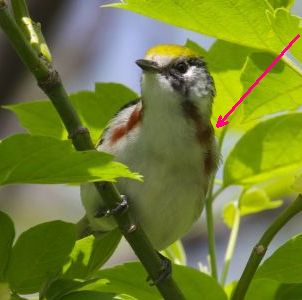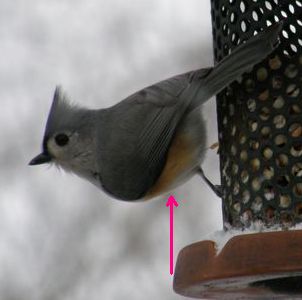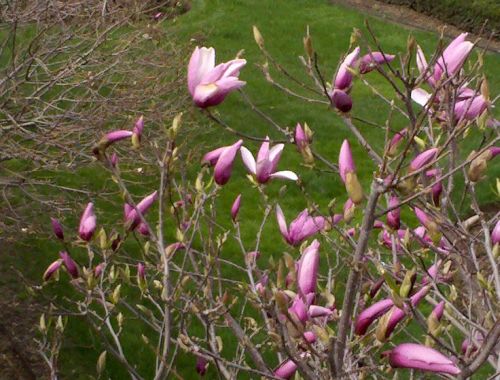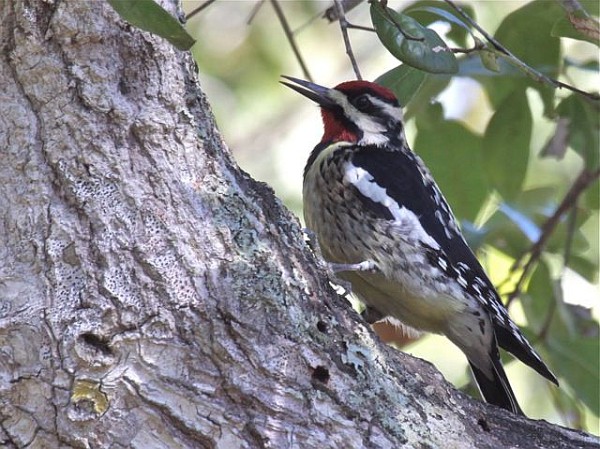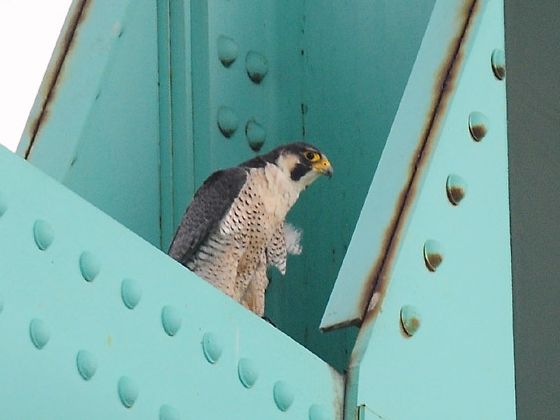
If you’ve been watching the peregrines at the University of Pittsburgh’s Cathedral of Learning, you may have the false impression that all peregrines are incubating right now and their eggs will soon hatch.
Not so.
Some peregrines, even in Pittsburgh, are still laying eggs. That’s what Steve Gosser found out in Tarentum last Sunday after a chain of events that put him at the bridge with his camera at just the right moment.
It started last December when Dan Yagusic identified a pair of peregrines at the Tarentum Bridge. Steve confirmed the same pair in February. Then I visited the bridge April 4 and after a boring hour of nothing but pigeons, I was rewarded with 10 seconds of excitement: a peregrine loudly chased a red-tailed hawk away from the bridge. That bird must be nesting there!
On the strength of these observations Steve visited the bridge last Sunday hoping to photograph the falcons. He only had to wait 10 minutes before they appeared, courting loudly. They flew away but soon returned and mated on a bridge beam. Steve took a lot of pictures.
Peregrines mate prior to egg laying and until incubation begins, so this pair hadn’t completed their clutch yet.
I hope they’re successful. You see, I have a special interest in them. The male was born at the Cathedral of Learning in 2008, the son of Dorothy and E2, so his babies will be their “grandkids.” Oh boy!
(photo by Steve Gosser)
